AWS DevOps Blog
Create a CI/CD pipeline for .NET Lambda functions with AWS CDK Pipelines
The AWS Cloud Development Kit (AWS CDK) is an open-source software development framework to define cloud infrastructure in familiar programming languages and provision it through AWS CloudFormation.
In this blog post, we will explore the process of creating a Continuous Integration/Continuous Deployment (CI/CD) pipeline for a .NET AWS Lambda function using the CDK Pipelines. We will cover all the necessary steps to automate the deployment of the .NET Lambda function, including setting up the development environment, creating the pipeline with AWS CDK, configuring the pipeline stages, and publishing the test reports. Additionally, we will show how to promote the deployment from a lower environment to a higher environment with manual approval.
Background
AWS CDK makes it easy to deploy a stack that provisions your infrastructure to AWS from your workstation by simply running cdk deploy. This is useful when you are doing initial development and testing. However, in most real-world scenarios, there are multiple environments, such as development, testing, staging, and production. It may not be the best approach to deploy your CDK application in all these environments using cdk deploy. Deployment to these environments should happen through more reliable, automated pipelines. CDK Pipelines makes it easy to set up a continuous deployment pipeline for your CDK applications, powered by AWS CodePipeline.
The AWS CDK Developer Guide’s Continuous integration and delivery (CI/CD) using CDK Pipelines page shows you how you can use CDK Pipelines to deploy a Node.js based Lambda function. However, .NET based Lambda functions are different from Node.js or Python based Lambda functions in that .NET code first needs to be compiled to create a deployment package. As a result, we decided to write this blog as a step-by-step guide to assist our .NET customers with deploying their Lambda functions utilizing CDK Pipelines.
In this post, we dive deeper into creating a real-world pipeline that runs build and unit tests, and deploys a .NET Lambda function to one or multiple environments.
Architecture
CDK Pipelines is a construct library that allows you to provision a CodePipeline pipeline. The pipeline created by CDK pipelines is self-mutating. This means, you need to run cdk deploy one time to get the pipeline started. After that, the pipeline automatically updates itself if you add new application stages or stacks in the source code.
The following diagram captures the architecture of the CI/CD pipeline created with CDK Pipelines. Let’s explore this architecture at a high level before diving deeper into the details.
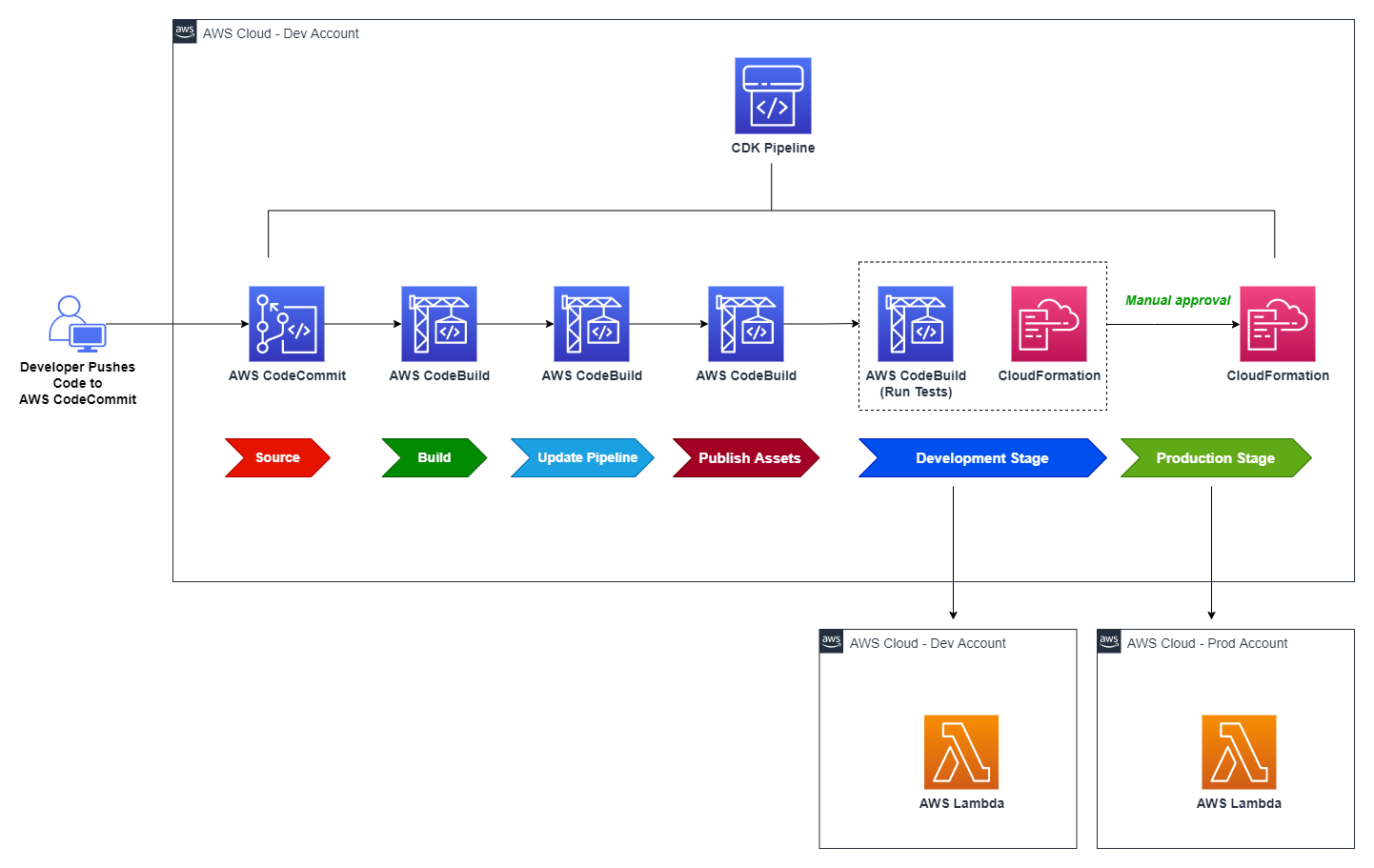
Figure 1: Reference architecture diagram
The solution creates a CodePipeline with a AWS CodeCommit repo as the source (CodePipeline Source Stage). When code is checked into CodeCommit, the pipeline is automatically triggered and retrieves the code from the CodeCommit repository branch to proceed to the Build stage.
- Build stage compiles the CDK application code and generates the cloud assembly.
- Update Pipeline stage updates the pipeline (if necessary).
- Publish Assets stage uploads the CDK assets to Amazon S3.
After Publish Assets is complete, the pipeline deploys the Lambda function to both the development and production environments. For added control, the architecture includes a manual approval step for releases that target the production environment.
Prerequisites
For this tutorial, you should have:
- An AWS account
- Visual Studio 2022
- AWS Toolkit for Visual Studio
- Node.js 18.x or later
- AWS CDK v2 (2.67.0 or later required)
- Git
Bootstrapping
Before you use AWS CDK to deploy CDK Pipelines, you must bootstrap the AWS environments where you want to deploy the Lambda function. An environment is the target AWS account and Region into which the stack is intended to be deployed.
In this post, you deploy the Lambda function into a development environment and, optionally, a production environment. This requires bootstrapping both environments. However, deployment to a production environment is optional; you can skip bootstrapping that environment for the time being, as we will cover that later.
This is one-time activity per environment for each environment to which you want to deploy CDK applications. To bootstrap the development environment, run the below command, substituting in the AWS account ID for your dev account, the region you will use for your dev environment, and the locally-configured AWS CLI profile you wish to use for that account. See the documentation for additional details.
cdk bootstrap aws://<DEV-ACCOUNT-ID>/<DEV-REGION> \
--profile DEV-PROFILE \
--cloudformation-execution-policies arn:aws:iam::aws:policy/AdministratorAccess‐‐profile specifies the AWS CLI credential profile that will be used to bootstrap the environment. If not specified, default profile will be used. The profile should have sufficient permissions to provision the resources for the AWS CDK during bootstrap process.
‐‐cloudformation-execution-policies specifies the ARNs of managed policies that should be attached to the deployment role assumed by AWS CloudFormation during deployment of your stacks.
Note: By default, stacks are deployed with full administrator permissions using the
AdministratorAccesspolicy, but for real-world usage, you should define a more restrictive IAM policy and use that, refer customizing bootstrapping in AWS CDK documentation and Secure CDK deployments with IAM permission boundaries to see how to do that.
Create a Git repository in AWS CodeCommit
For this post, you will use CodeCommit to store your source code. First, create a git repository named dotnet-lambda-cdk-pipeline in CodeCommit by following these steps in the CodeCommit documentation.
After you have created the repository, generate git credentials to access the repository from your local machine if you don’t already have them. Follow the steps below to generate git credentials.
- Sign in to the AWS Management Console and open the IAM console.
- Create an IAM user (for example, git-user).
- Once user is created, attach AWSCodeCommitPowerUser policy to the user.
- Next. open the user details page, choose the Security Credentials tab, and in HTTPS Git credentials for AWS CodeCommit, choose Generate.
- Download credentials to download this information as a .CSV file.
Clone the recently created repository to your workstation, then cd into dotnet-lambda-cdk-pipeline directory.
git clone <CODECOMMIT-CLONE-URL>
cd dotnet-lambda-cdk-pipelineAlternatively, you can use git-remote-codecommit to clone the repository with git clone codecommit::<REGION>://<PROFILE>@<REPOSITORY-NAME> command, replacing the placeholders with their original values. Using git-remote-codecommit does not require you to create additional IAM users to manage git credentials. To learn more, refer AWS CodeCommit with git-remote-codecommit documentation page.
Initialize the CDK project
From the command prompt, inside the dotnet-lambda-cdk-pipeline directory, initialize a AWS CDK project by running the following command.
cdk init app --language csharpOpen the generated C# solution in Visual Studio, right-click the DotnetLambdaCdkPipeline project and select Properties. Set the Target framework to .NET 6.
Create a CDK stack to provision the CodePipeline
Your CDK Pipelines application includes at least two stacks: one that represents the pipeline itself, and one or more stacks that represent the application(s) deployed via the pipeline. In this step, you create the first stack that deploys a CodePipeline pipeline in your AWS account.
From Visual Studio, open the solution by opening the .sln solution file (in the src/ folder). Once the solution has loaded, open the DotnetLambdaCdkPipelineStack.cs file, and replace its contents with the following code. Note that the filename, namespace and class name all assume you named your Git repository as shown earlier.
Note: be sure to replace “<CODECOMMIT-REPOSITORY-NAME>” in the code below with the name of your CodeCommit repository (in this blog post, we have used dotnet-lambda-cdk-pipeline).
using Amazon.CDK;
using Amazon.CDK.AWS.CodeBuild;
using Amazon.CDK.AWS.CodeCommit;
using Amazon.CDK.AWS.IAM;
using Amazon.CDK.Pipelines;
using Constructs;
using System.Collections.Generic;
namespace DotnetLambdaCdkPipeline
{
public class DotnetLambdaCdkPipelineStack : Stack
{
internal DotnetLambdaCdkPipelineStack(Construct scope, string id, IStackProps props = null) : base(scope, id, props)
{
var repository = Repository.FromRepositoryName(this, "repository", "<CODECOMMIT-REPOSITORY-NAME>");
// This construct creates a pipeline with 3 stages: Source, Build, and UpdatePipeline
var pipeline = new CodePipeline(this, "pipeline", new CodePipelineProps
{
PipelineName = "LambdaPipeline",
SelfMutation = true,
// Synth represents a build step that produces the CDK Cloud Assembly.
// The primary output of this step needs to be the cdk.out directory generated by the cdk synth command.
Synth = new CodeBuildStep("Synth", new CodeBuildStepProps
{
// The files downloaded from the repository will be placed in the working directory when the script is executed
Input = CodePipelineSource.CodeCommit(repository, "master"),
// Commands to run to generate CDK Cloud Assembly
Commands = new string[] { "npm install -g aws-cdk", "cdk synth" },
// Build environment configuration
BuildEnvironment = new BuildEnvironment
{
BuildImage = LinuxBuildImage.AMAZON_LINUX_2_4,
ComputeType = ComputeType.MEDIUM,
// Specify true to get a privileged container inside the build environment image
Privileged = true
}
})
});
}
}
}In the preceding code, you use CodeBuildStep instead of ShellStep, since ShellStep doesn’t provide a property to specify BuildEnvironment. We need to specify the build environment in order to set privileged mode, which allows access to the Docker daemon in order to build container images in the build environment. This is necessary to use the CDK’s bundling feature, which is explained in later in this blog post.
Open the file src/DotnetLambdaCdkPipeline/Program.cs, and edit its contents to reflect the below. Be sure to replace the placeholders with your AWS account ID and region for your dev environment.
using Amazon.CDK;
namespace DotnetLambdaCdkPipeline
{
sealed class Program
{
public static void Main(string[] args)
{
var app = new App();
new DotnetLambdaCdkPipelineStack(app, "DotnetLambdaCdkPipelineStack", new StackProps
{
Env = new Amazon.CDK.Environment
{
Account = "<DEV-ACCOUNT-ID>",
Region = "<DEV-REGION>"
}
});
app.Synth();
}
}
}Note: Instead of committing the account ID and region to source control, you can set environment variables on the CodeBuild agent and use them; see Environments in the AWS CDK documentation for more information. Because the CodeBuild agent is also configured in your CDK code, you can use the BuildEnvironmentVariableType property to store environment variables in AWS Systems Manager Parameter Store or AWS Secrets Manager.
After you make the code changes, build the solution to ensure there are no build issues. Next, commit and push all the changes you just made. Run the following commands (or alternatively use Visual Studio’s built-in Git functionality to commit and push your changes):
git add --all .
git commit -m 'Initial commit'
git pushThen navigate to the root directory of repository where your cdk.json file is present, and run the cdk deploy command to deploy the initial version of CodePipeline. Note that the deployment can take several minutes.
The pipeline created by CDK Pipelines is self-mutating. This means you only need to run cdk deploy one time to get the pipeline started. After that, the pipeline automatically updates itself if you add new CDK applications or stages in the source code.
After the deployment has finished, a CodePipeline is created and automatically runs. The pipeline includes three stages as shown below.
- Source – It fetches the source of your AWS CDK app from your CodeCommit repository and triggers the pipeline every time you push new commits to it.
- Build – This stage compiles your code (if necessary) and performs a
cdk synth. The output of that step is a cloud assembly. - UpdatePipeline – This stage runs
cdk deploycommand on the cloud assembly generated in previous stage. It modifies the pipeline if necessary. For example, if you update your code to add a new deployment stage to the pipeline to your application, the pipeline is automatically updated to reflect the changes you made.
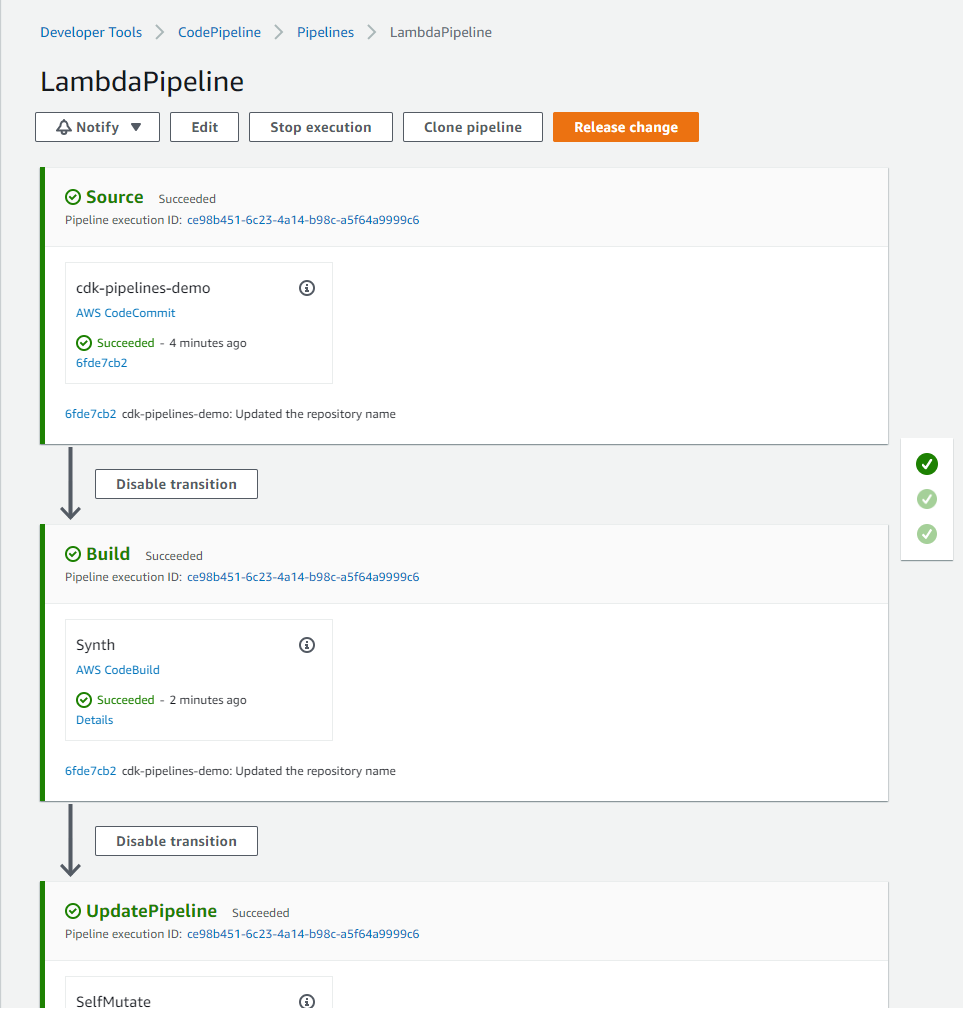
Figure 2: Initial CDK pipeline stages
Define a CodePipeline stage to deploy .NET Lambda function
In this step, you create a stack containing a simple Lambda function and place that stack in a stage. Then you add the stage to the pipeline so it can be deployed.
To create a Lambda project, do the following:
- In Visual Studio, right-click on the solution, choose Add, then choose New Project.
- In the New Project dialog box, choose the AWS Lambda Project (.NET Core – C#) template, and then choose OK or Next.
- For Project Name, enter
SampleLambda, and then choose Create. - From the Select Blueprint dialog, choose Empty Function, then choose Finish.
Next, create a new file in the CDK project at src/DotnetLambdaCdkPipeline/SampleLambdaStack.cs to define your application stack containing a Lambda function. Update the file with the following contents (adjust the namespace as necessary):
using Amazon.CDK;
using Amazon.CDK.AWS.Lambda;
using Constructs;
using AssetOptions = Amazon.CDK.AWS.S3.Assets.AssetOptions;
namespace DotnetLambdaCdkPipeline
{
class SampleLambdaStack: Stack
{
public SampleLambdaStack(Construct scope, string id, StackProps props = null) : base(scope, id, props)
{
// Commands executed in a AWS CDK pipeline to build, package, and extract a .NET function.
var buildCommands = new[]
{
"cd /asset-input",
"export DOTNET_CLI_HOME=\"/tmp/DOTNET_CLI_HOME\"",
"export PATH=\"$PATH:/tmp/DOTNET_CLI_HOME/.dotnet/tools\"",
"dotnet build",
"dotnet tool install -g Amazon.Lambda.Tools",
"dotnet lambda package -o output.zip",
"unzip -o -d /asset-output output.zip"
};
new Function(this, "LambdaFunction", new FunctionProps
{
Runtime = Runtime.DOTNET_6,
Handler = "SampleLambda::SampleLambda.Function::FunctionHandler",
// Asset path should point to the folder where .csproj file is present.
// Also, this path should be relative to cdk.json file.
Code = Code.FromAsset("./src/SampleLambda", new AssetOptions
{
Bundling = new BundlingOptions
{
Image = Runtime.DOTNET_6.BundlingImage,
Command = new[]
{
"bash", "-c", string.Join(" && ", buildCommands)
}
}
})
});
}
}
}Building inside a Docker container
The preceding code uses bundling feature to build the Lambda function inside a docker container. Bundling starts a new docker container, copies the Lambda source code inside /asset-input directory of the container, runs the specified commands that write the package files under /asset-output directory. The files in /asset-output are copied as assets to the stack’s cloud assembly directory. In a later stage, these files are zipped and uploaded to S3 as the CDK asset.
Building Lambda functions inside Docker containers is preferable than building them locally because it reduces the host machine’s dependencies, resulting in greater consistency and reliability in your build process.
Bundling requires the creation of a docker container on your build machine. For this purpose, the privileged: true setting on the build machine has already been configured.
Adding development stage
Create a new file in the CDK project at src/DotnetLambdaCdkPipeline/DotnetLambdaCdkPipelineStage.cs to hold your stage. This class will create the development stage for your pipeline.
using Amazon.CDK;
using Constructs;
namespace DotnetLambdaCdkPipeline
{
public class DotnetLambdaCdkPipelineStage : Stage
{
internal DotnetLambdaCdkPipelineStage(Construct scope, string id, IStageProps props = null) : base(scope, id, props)
{
Stack lambdaStack = new SampleLambdaStack(this, "LambdaStack");
}
}
}Edit src/DotnetLambdaCdkPipeline/DotnetLambdaCdkPipelineStack.cs to add the stage to your pipeline. Add the bolded line from the code below to your file.
using Amazon.CDK;
using Amazon.CDK.Pipelines;
namespace DotnetLambdaCdkPipeline
{
public class DotnetLambdaCdkPipelineStack : Stack
{
internal DotnetLambdaCdkPipelineStack(Construct scope, string id, IStackProps props = null) : base(scope, id, props)
{
var repository = Repository.FromRepositoryName(this, "repository", "dotnet-lambda-cdk-application");
// This construct creates a pipeline with 3 stages: Source, Build, and UpdatePipeline
var pipeline = new CodePipeline(this, "pipeline", new CodePipelineProps
{
PipelineName = "LambdaPipeline",
.
.
.
});
var devStage = pipeline.AddStage(new DotnetLambdaCdkPipelineStage(this, "Development"));
}
}
}Next, build the solution, then commit and push the changes to the CodeCommit repo. This will trigger the CodePipeline to start.
When the pipeline runs, UpdatePipeline stage detects the changes and updates the pipeline based on the code it finds there. After the UpdatePipeline stage completes, pipeline is updated with additional stages.
Let’s observe the changes:
- An Assets stage has been added. This stage uploads all the assets you are using in your app to Amazon S3 (the S3 bucket created during bootstrapping) so that they could be used by other deployment stages later in the pipeline. For example, the CloudFormation template used by the development stage, includes reference to these assets, which is why assets are first moved to S3 and then referenced in later stages.
- A Development stage with two actions has been added. The first action is to create the change set, and the second is to execute it.
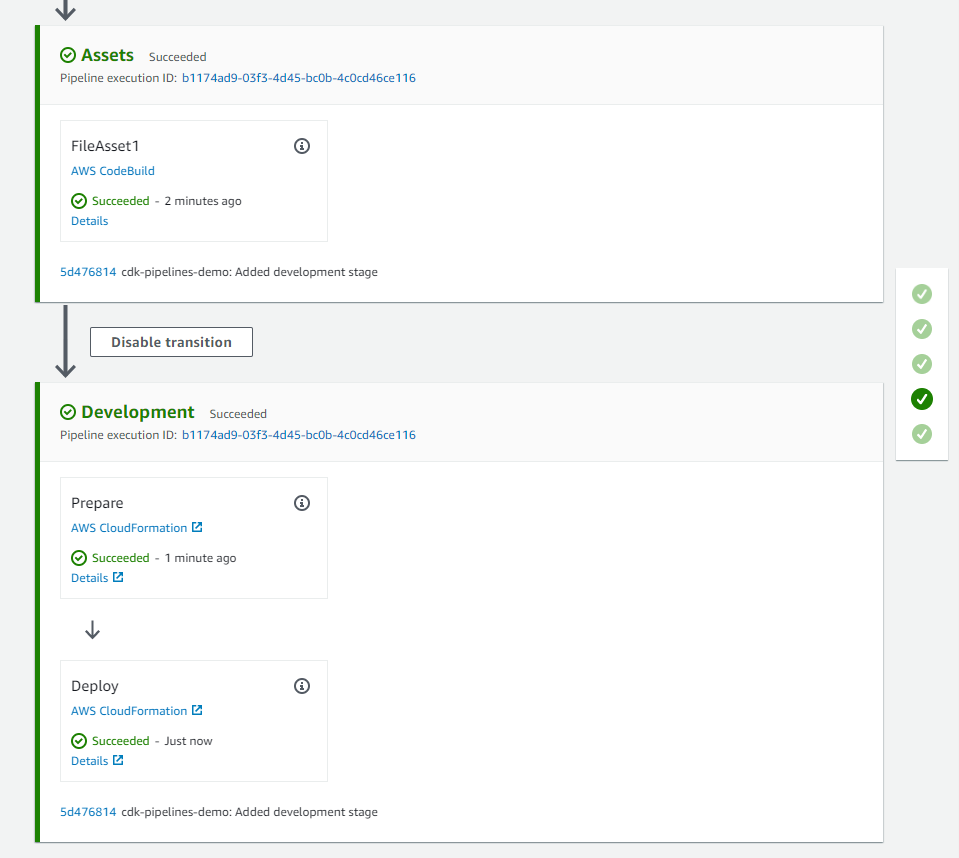
Figure 3: CDK pipeline with development stage to deploy .NET Lambda function
After the Deploy stage has completed, you can find the newly-deployed Lambda function by visiting the Lambda console, selecting “Functions” from the left menu, and filtering the functions list with “LambdaStack”. Note the runtime is .NET.
Running Unit Test cases in the CodePipeline
Next, you will add unit test cases to your Lambda function, and run them through the pipeline to generate a test report in CodeBuild.
To create a Unit Test project, do the following:
- Right click on the solution, choose Add, then choose New Project.
- In the New Project dialog box, choose the xUnit Test Project template, and then choose OK or Next.
- For Project Name, enter
SampleLambda.Tests, and then choose Create or Next.
Depending on your version of Visual Studio, you may be prompted to select the version of .NET to use. Choose .NET 6.0 (Long Term Support), then choose Create. - Right click on
SampleLambda.Testsproject, choose Add, then choose Project Reference. SelectSampleLambdaproject, and then choose OK.
Next, edit the src/SampleLambda.Tests/UnitTest1.cs file to add a unit test. You can use the code below, which verifies that the Lambda function returns the input string as upper case.
using Xunit;
namespace SampleLambda.Tests
{
public class UnitTest1
{
[Fact]
public void TestSuccess()
{
var lambda = new SampleLambda.Function();
var result = lambda.FunctionHandler("test string", context: null);
Assert.Equal("TEST STRING", result);
}
}
}You can add pre-deployment or post-deployment actions to the stage by calling its AddPre() or AddPost() method. To execute above test cases, we will use a pre-deployment action.
To add a pre-deployment action, we will edit the src/DotnetLambdaCdkPipeline/DotnetLambdaCdkPipelineStack.cs file in the CDK project, after we add code to generate test reports.
To run the unit test(s) and publish the test report in CodeBuild, we will construct a BuildSpec for our CodeBuild project. We also provide IAM policy statements to be attached to the CodeBuild service role granting it permissions to run the tests and create reports. Update the file by adding the new code (starting with “// Add this code for test reports”) below the devStage declaration you added earlier:
using Amazon.CDK;
using Amazon.CDK.Pipelines;
...
namespace DotnetLambdaCdkPipeline
{
public class DotnetLambdaCdkPipelineStack : Stack
{
internal DotnetLambdaCdkPipelineStack(Construct scope, string id, IStackProps props = null) : base(scope, id, props)
{
// ...
// ...
// ...
var devStage = pipeline.AddStage(new DotnetLambdaCdkPipelineStage(this, "Development"));
// Add this code for test reports
var reportGroup = new ReportGroup(this, "TestReports", new ReportGroupProps
{
ReportGroupName = "TestReports"
});
// Policy statements for CodeBuild Project Role
var policyProps = new PolicyStatementProps()
{
Actions = new string[] {
"codebuild:CreateReportGroup",
"codebuild:CreateReport",
"codebuild:UpdateReport",
"codebuild:BatchPutTestCases"
},
Effect = Effect.ALLOW,
Resources = new string[] { reportGroup.ReportGroupArn }
};
// PartialBuildSpec in AWS CDK for C# can be created using Dictionary
var reports = new Dictionary<string, object>()
{
{
"reports", new Dictionary<string, object>()
{
{
reportGroup.ReportGroupArn, new Dictionary<string,object>()
{
{ "file-format", "VisualStudioTrx" },
{ "files", "**/*" },
{ "base-directory", "./testresults" }
}
}
}
}
};
// End of new code block
}
}
}Finally, add the CodeBuildStep as a pre-deployment action to the development stage with necessary CodeBuildStepProps to set up reports. Add this after the new code you added above.
devStage.AddPre(new Step[]
{
new CodeBuildStep("Unit Test", new CodeBuildStepProps
{
Commands= new string[]
{
"dotnet test -c Release ./src/SampleLambda.Tests/SampleLambda.Tests.csproj --logger trx --results-directory ./testresults",
},
PrimaryOutputDirectory = "./testresults",
PartialBuildSpec= BuildSpec.FromObject(reports),
RolePolicyStatements = new PolicyStatement[] { new PolicyStatement(policyProps) },
BuildEnvironment = new BuildEnvironment
{
BuildImage = LinuxBuildImage.AMAZON_LINUX_2_4,
ComputeType = ComputeType.MEDIUM
}
})
});Build the solution, then commit and push the changes to the repository. Pushing the changes triggers the pipeline, runs the test cases, and publishes the report to the CodeBuild console. To view the report, after the pipeline has completed, navigate to TestReports in CodeBuild’s Report Groups as shown below.
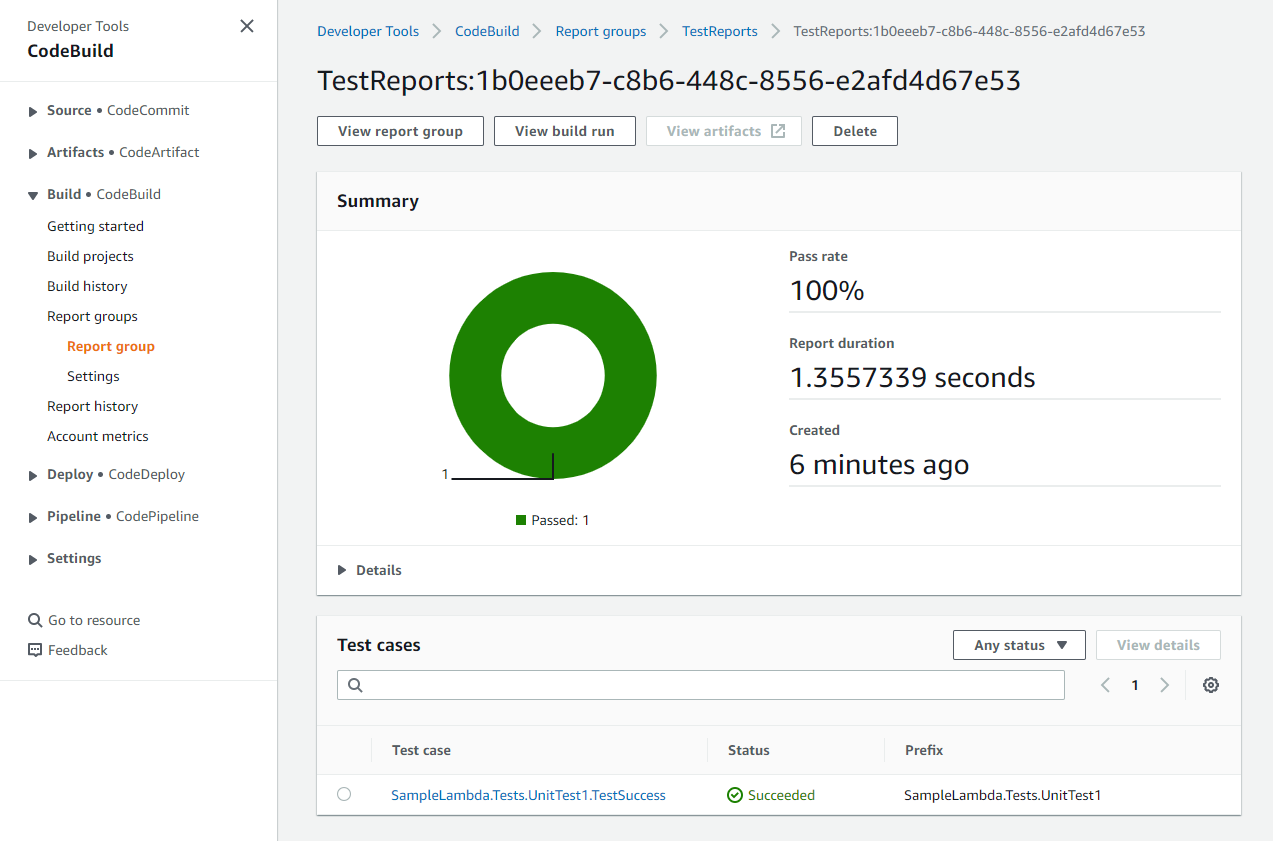
Figure 4: Test report in CodeBuild report group
Deploying to production environment with manual approval
CDK Pipelines makes it very easy to deploy additional stages with different accounts. You have to bootstrap the accounts and Regions you want to deploy to, and they must have a trust relationship added to the pipeline account.
To bootstrap an additional production environment into which AWS CDK applications will be deployed by the pipeline, run the below command, substituting in the AWS account ID for your production account, the region you will use for your production environment, the AWS CLI profile to use with the prod account, and the AWS account ID where the pipeline is already deployed (the account you bootstrapped at the start of this blog).
cdk bootstrap aws://<PROD-ACCOUNT-ID>/<PROD-REGION>
--profile <PROD-PROFILE> \
--cloudformation-execution-policies arn:aws:iam::aws:policy/AdministratorAccess \
--trust <PIPELINE-ACCOUNT-ID>The --trust option indicates which other account should have permissions to deploy AWS CDK applications into this environment. For this option, specify the pipeline’s AWS account ID.
Use below code to add a new stage for production deployment with manual approval. Add this code below the “devStage.AddPre(...)” code block you added in the previous section, and remember to replace the placeholders with your AWS account ID and region for your prod environment.
var prodStage = pipeline.AddStage(new DotnetLambdaCdkPipelineStage(this, "Production", new StageProps
{
Env = new Environment
{
Account = "<PROD-ACCOUNT-ID>",
Region = "<PROD-REGION>"
}
}), new AddStageOpts
{
Pre = new[] { new ManualApprovalStep("PromoteToProd") }
});To support deploying CDK applications to another account, the artifact buckets must be encrypted, so add a CrossAccountKeys property to the CodePipeline near the top of the pipeline stack file, and set the value to true (see the line in bold in the code snippet below). This creates a KMS key for the artifact bucket, allowing cross-account deployments.
var pipeline = new CodePipeline(this, "pipeline", new CodePipelineProps
{
PipelineName = "LambdaPipeline",
SelfMutation = true,
CrossAccountKeys = true,
EnableKeyRotation = true, //Enable KMS key rotation for the generated KMS keys
// ...
}After you commit and push the changes to the repository, a new manual approval step called PromoteToProd is added to the Production stage of the pipeline. The pipeline pauses at this step and awaits manual approval as shown in the screenshot below.
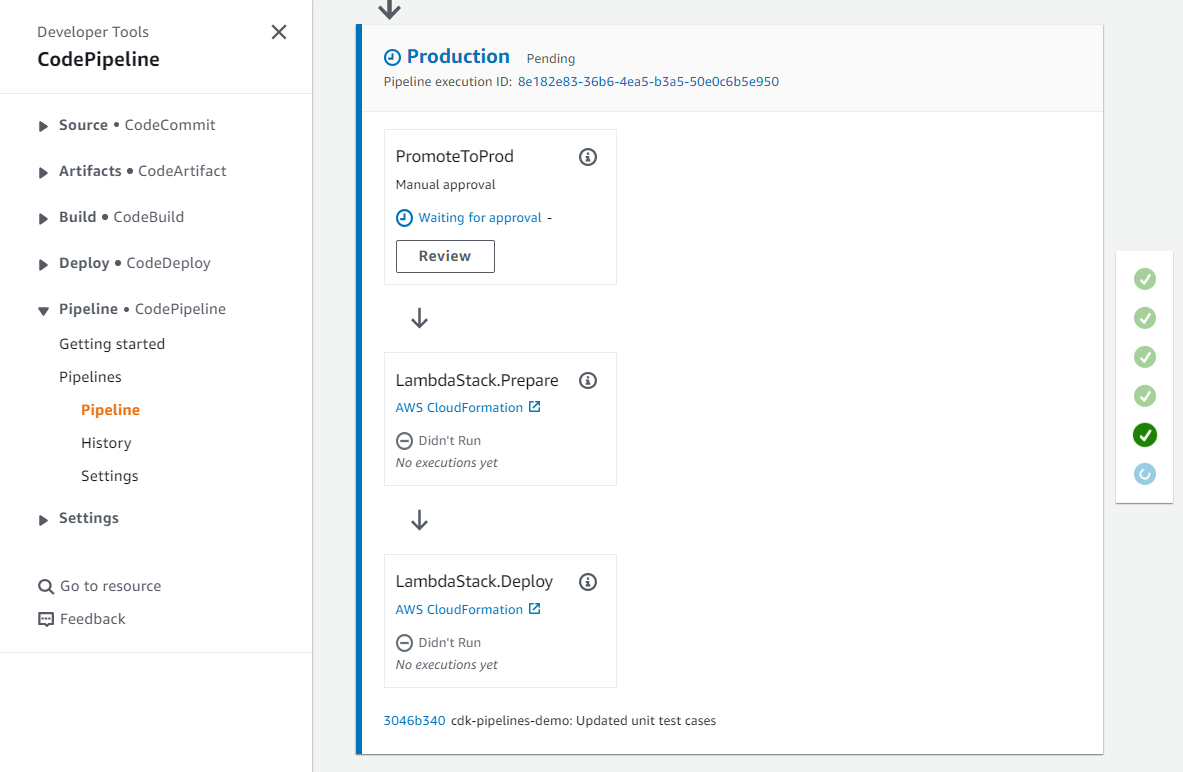
Figure 5: Pipeline waiting for manual review
When you click the Review button, you are presented with the following dialog. From here, you can choose to approve or reject and add comments if needed.

Figure 6: Manual review approval dialog
Once you approve, the pipeline resumes, executes the remaining steps and completes the deployment to production environment.
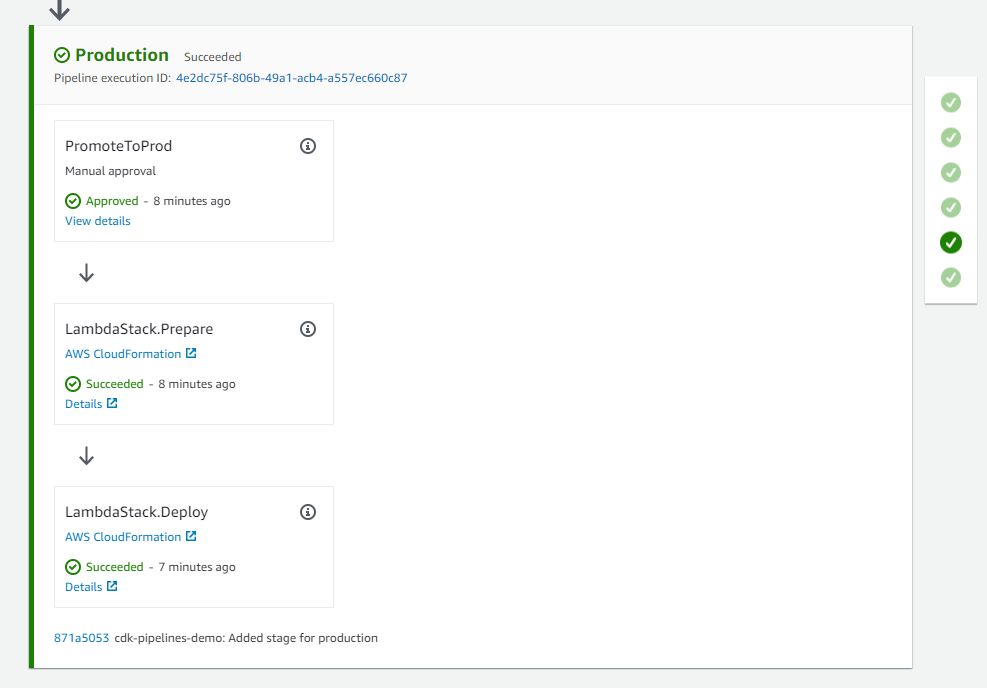
Figure 7: Successful deployment to production environment
Clean up
To avoid incurring future charges, log into the AWS console of the different accounts you used, go to the AWS CloudFormation console of the Region(s) where you chose to deploy, select and click Delete on the stacks created for this activity. Alternatively, you can delete the CloudFormation Stack(s) using cdk destroy command. It will not delete the CDKToolkit stack that the bootstrap command created. If you want to delete that as well, you can do it from the AWS Console.
Conclusion
In this post, you learned how to use CDK Pipelines for automating the deployment process of .NET Lambda functions. An intuitive and flexible architecture makes it easy to set up a CI/CD pipeline that covers the entire application lifecycle, from build and test to deployment. With CDK Pipelines, you can streamline your development workflow, reduce errors, and ensure consistent and reliable deployments.
For more information on CDK Pipelines and all the ways it can be used, see the CDK Pipelines reference documentation.
About the authors: